Introduction
Front
{{section_header}}{{section.name}}{{/section_header}}
The {{product.name}} is about as minimal as you can get. LG has worked hard to slim down every distracting aspect of the bezel (prominent, illuminated brand logo notwithstanding). It's not quite an edge-to-edge screen, but it's very close. In addition to be quite thin, it's also only 16.5 pounds. For comparison's sake, a 55-inch plasma TV we reviewed weighed 98 pounds. Because the TV pictured here isn't guaranteed to be the final design, we won't count our chickens, but we expect it to be similar. LG was quite vocal about how hard it's been working to to make the thinnest, best looking TVs.
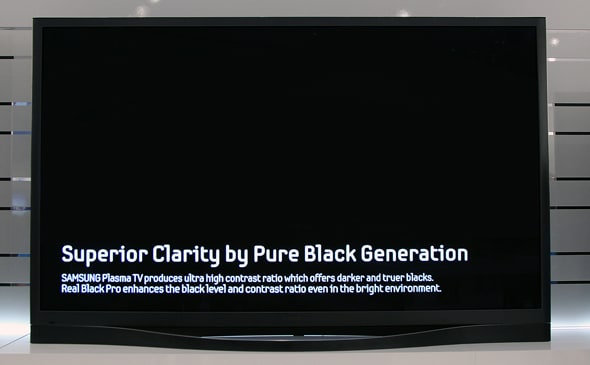
Back
{{section_header}}{{section.name}}{{/section_header}}
LG cleverly obscured all the ports on the back of the {{product.name}}, so we're not sure exactly what connections it offers. From this angle, though, you can see how remarkably thin the panel is.
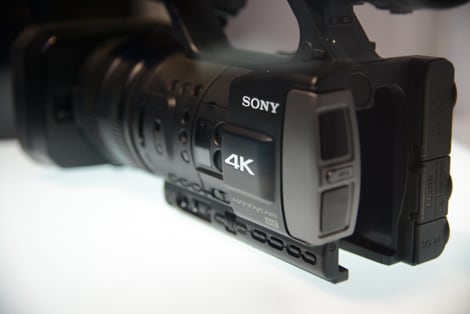
Sides
{{section_header}}{{section.name}}{{/section_header}}
Good lord, is this thing slender! Measuring only 4mm (3/16ths of an inch) wide, it almost disappears when you view it from the side. Of course, with a body cavity like that, there's no room for a jack pack of ports or speakers. When the TV finally comes to market, these necessities will likely fatten out the bottom or come with an attachable bottom piece.
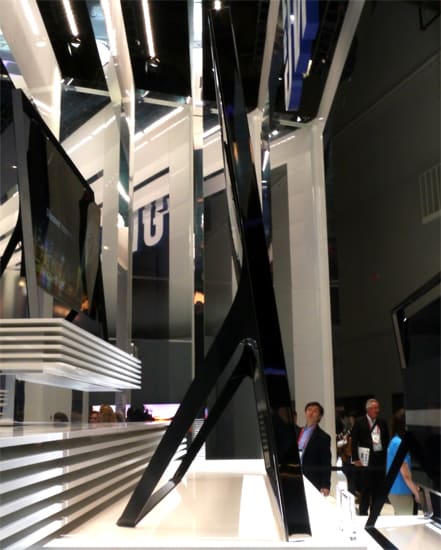
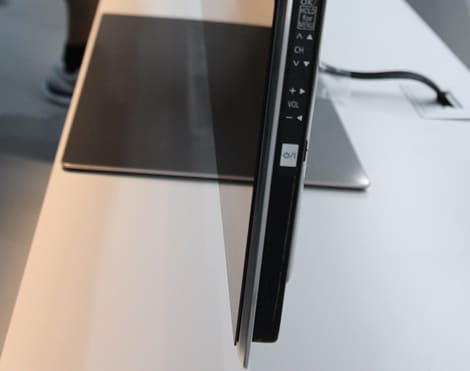
Stand/Mount
{{section_header}}{{section.name}}{{/section_header}}
The {{product.name}} is shown here in its pedestal mount. We're not sure if this will be a commercially-available option or if it's just for demo purposes at CES, but we heard comments that seemed to indicate the former. There will also be a typical tabletop stand available.
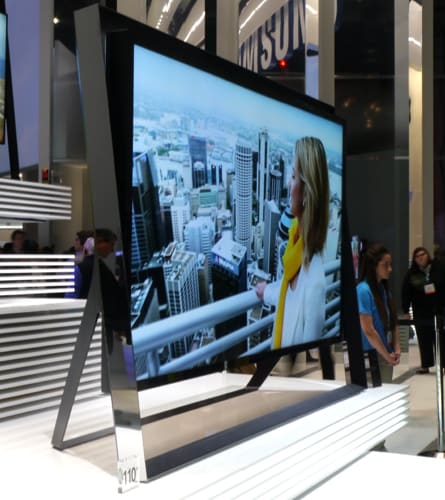
Aesthetics
{{section_header}}{{section.name}}{{/section_header}}
There's no denying the attractiveness of the {{product.name}}. At 55 inches wide and 4mm thick, it's almost like a giant sheet of paper – beautiful, color-rich, OLED paper.
Display Size & Technology
{{section_header}}{{section.name}}{{/section_header}}
What sets the {{product.name}} apart and is creating so much buzz in the OLED display technology. Heretofore, all the HD TVs on the market have been either plasma or LCD (the latter having either CCFL or LED backlighting). Traditionally, plasma has been praised for it's deep black levels, while LCDs are generally thinner, lighter, and brighter. OLED is supposed to combine the strengths of both. OLED panels do not require backlighting; each pixel produces its own light when charged with electricity. Plasmas are similar in that respect, but OLEDs can be made almost wafer thin, while plasma require more electronics in the back. Also, plasmas can't get near the brightness of a decent LCD, while OLEDs can. Combine those deep blacks and bright whites and you've got an amazing contrast ratio. That's the key benefit that has people so excited.

If we're going to get really nerdy about the display technology of the {{product.name}}, we should also talk about the 4-Color Pixels and Color Refiner that LG is debuting. In addition to the standard red, green, and blue pixels, they've added a white pixel. LG promises that this results in a "more accurate color depiction" (read original). This should be taken with a large grain of salt, however, as some writers have pointed out. There is already a very clear standard for how color is displayed for HD pictures (it's called rec. 709, and we measure it in every TV we review). TVs don't need more than the red, green, and blue pixels to produce the color gamut. Sharp has done something similar when they added a yellow pixel to the Aquos series, vaunting a better color performance that was debunked by TV expert and TelevisionInfo.com friend Dr. Ray Soniera.
Formats & Resolution
{{section_header}}{{section.name}}{{/section_header}}
Though LG is exploring the new UD (ultra definition) resolution with some models, but the {{product.name}} has the more familiar 1080p resolution (1920 x 1080 at 60fps), a spec shared with nearly every high-end TV on the market.
Brightness, Blacks and Contrast Ratio
{{section_header}}{{section.name}}{{/section_header}}
There are no solid specs right now for the brightness, black level, or contrast ratio. On some LG channels they've claimed an "infinite contrast ratio," which is a bit misleading. Contrast ratio is calculated simply by taking the brightness level and dividing it by the black level. Because it's possible to make the black level zero, any number divided by zero equals zero, or "infinite." Calling it infinite gives no indication of how bright the screen can get.
From our limited interaction with the model on the show floor, the contrast ratio is actually quite good – bordering on amazing. The blacks are incredibly dark, nearly indistinguishable from the bezel. The whites pop with remarkable brilliance and clarity. It's really something to see.
Color
{{section_header}}{{section.name}}{{/section_header}}
LG is claiming that the {{product.name}} features 4-Color Pixels and Color Refiner technologies. As we stated at the top of the page, this is of dubious value. We can't make any final judgements until we test it for ourselves, but we've heard this song before. The standards for what color should look like are clearly defined and do not require anything beyond the standard red, green, and blue channels. It's possible that the colors we saw on the {{product.name}} looked a little oversaturated, but we're not trusting our eyes when the TV isn't calibrated and the ambient light is less than ideal.
Viewing Angle
3D Glasses
{{section_header}}{{section.name}}{{/section_header}}
The {{product.name}} uses passive shutter 3D technology, which LG has re-branded with the more dynamic name of "Cinema 3D." Passive 3D uses far less expensive glasses that also weigh less, making them more comfortable. For a more detailed look at the difference between active and passive glasses, read our special article. In short, all you need to know is that LG is leading the cavalry on passive 3D, while, Samsung, Sony, and Panasonic have put their efforts behind active shutter. Each has their trade-offs, as well as they're vocal defendants.
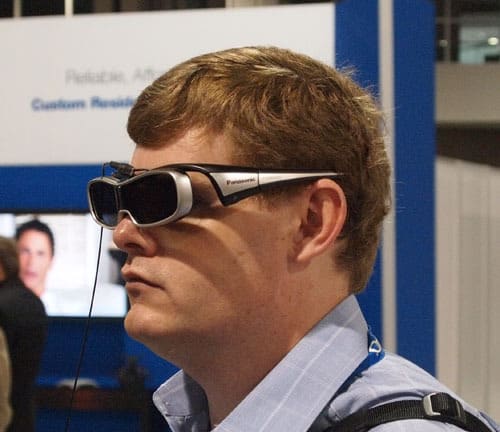
There's no getting around the fact that 3D glasses make you look ridiculous (and possibly feel ridiculous too).
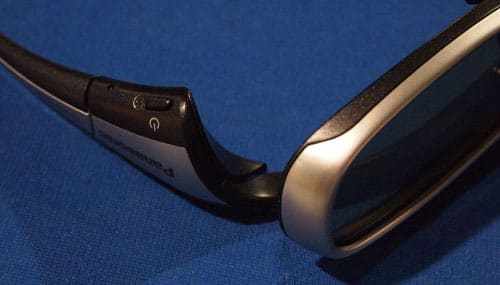
The power button makes the glasses usable for viewing 3D by turning on the active shutter feature.
3D Motion
Audio & Video Ports
{{section_header}}{{section.name}}{{/section_header}}
Operating under top stealth tactics, LG cunningly hid the ports from view under a plastic cover. What secrets lay beneath the inky, plastic shell? The world may never know. At least until the TV ships in mid-2012.
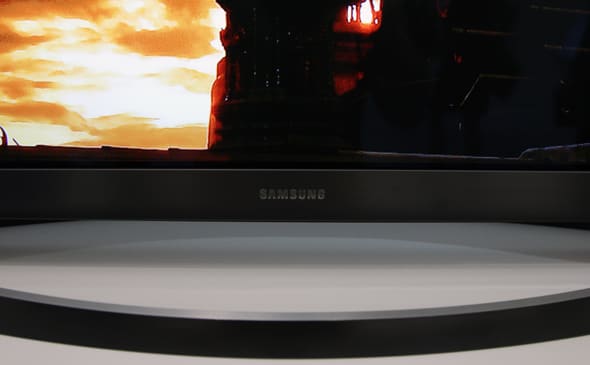
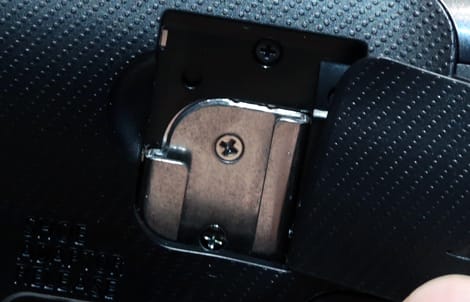
Internet & Other Media
{{section_header}}{{section.name}}{{/section_header}}
The {{product.name}} will surely have some type of internet connectivity, but it's unclear right now whether it will feature the standard Smart TV functionality or share the new Google TV software that has been promised to two yet-to-be-named series in the 2012 line-up.
Remote
{{section_header}}{{section.name}}{{/section_header}}
The {{product.name}} will ship with a standard remote control as well as the second-generation Magic Remote. When it premiered last year, the Magic Remote was limited to basic pointing and clicking from a distance, along with some basic buttons to control volume and channel up/down. We found the entire interface clunky and gimmicky.
This second-generation model certainly ups and ante, and now includes a wheel and voice recognition. We're not sure how often the voice recognition will really get used. It's a feature that seems to be getting slapped on a lot of devices this year, but it will be hard to replace the simplicity and reliability of point a traditional remote at a TV. The wheel, however, is almost certainly an improvement, as it would allow tighter control over things like menu scrolling, rather than the wildly inaccurate pointing that we disliked so much in the first-generation Magic Remotes.

Controls
{{section_header}}{{section.name}}{{/section_header}}
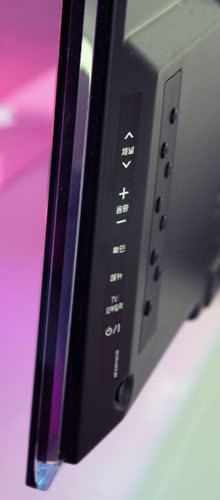
Menu
{{section_header}}{{section.name}}{{/section_header}}
The menu was not available for preview, unfortunately. We can't imagine it will be too far removed from the menus on the other LG TVs, but the company was not ready to comment on that yet.
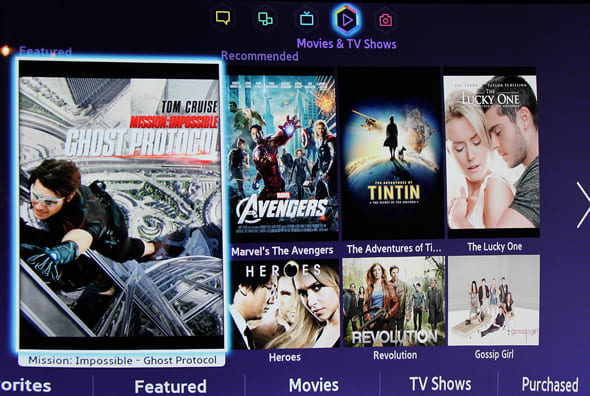
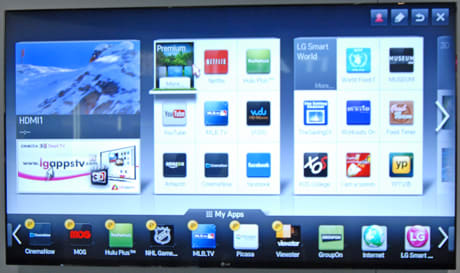
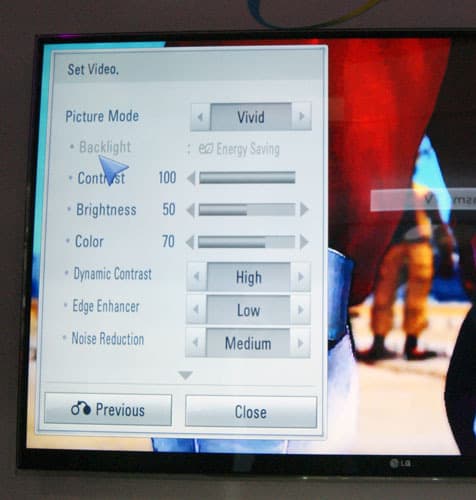
Conclusion
{{product.vanity}}
Every few years, the television industry reminds us of its amazing alacrity at making us feel that we, the consumers, are falling behind. Your big, old TV from the '90s had to be replaced by a high definition model, which may have been replaced by an even larger HD model a few years later, only to be faced with the prospect of 3D TVs after that. So what is this new OLED technology and should you be concerned that it's time for another upgrade?
In short, OLED is a display technology, like plasma and LCD, that defines how light and color are produced. In OLED panels, each pixel produces its own light when given an electrical charge, so there's no need for backlighting. When the electricity is turned off, the pixel becomes inky black. The reason everyone is so excited is that OLEDs combine the fantastic black levels of plasma with the bright whites of LCD, but the panels can be made thinner than either of them.
The {{product.name}} is not the first OLED to hit the market, but it's the first large screen model (55 inches) and if LG can give it an attractive enough price it just make gain some ground. Pricing has not yet been announced, but we don't expect it for anything under $3,000, if that. That makes it as aspirational purchase for the time being, but more models using OLED will eventually appear and prices will fall.
The picture quality is stunning, we have to admit. The shadows are jet black and the whites and bright colors sparkle. The TV will offer passive 3D, as well, but that feature was not being previewed just yet. Beyond that, it's hard to make a definitive assessment. We're chomping at the bit to get it into our labs, but we'll have to wait until mid-2012 for the {{product.name}} to ship.
Specs
{{manufacturer_specs_table}}
Meet the tester
David Kender oversees content at Reviewed as the Editor in Chief. He served as managing editor and editor in chief of Reviewed's ancestor, CamcorderInfo.com, helping to grow the company from a tiny staff to one of the most influential online review resources. In his time at Reviewed, David has helped to launch over 100 product categories and written too many articles to count.
Checking our work.
Our team is here for one purpose: to help you buy the best stuff and love what you own. Our writers, editors, and lab technicians obsess over the products we cover to make sure you're confident and satisfied. Have a different opinion about something we recommend? Email us and we'll compare notes.
Shoot us an email
